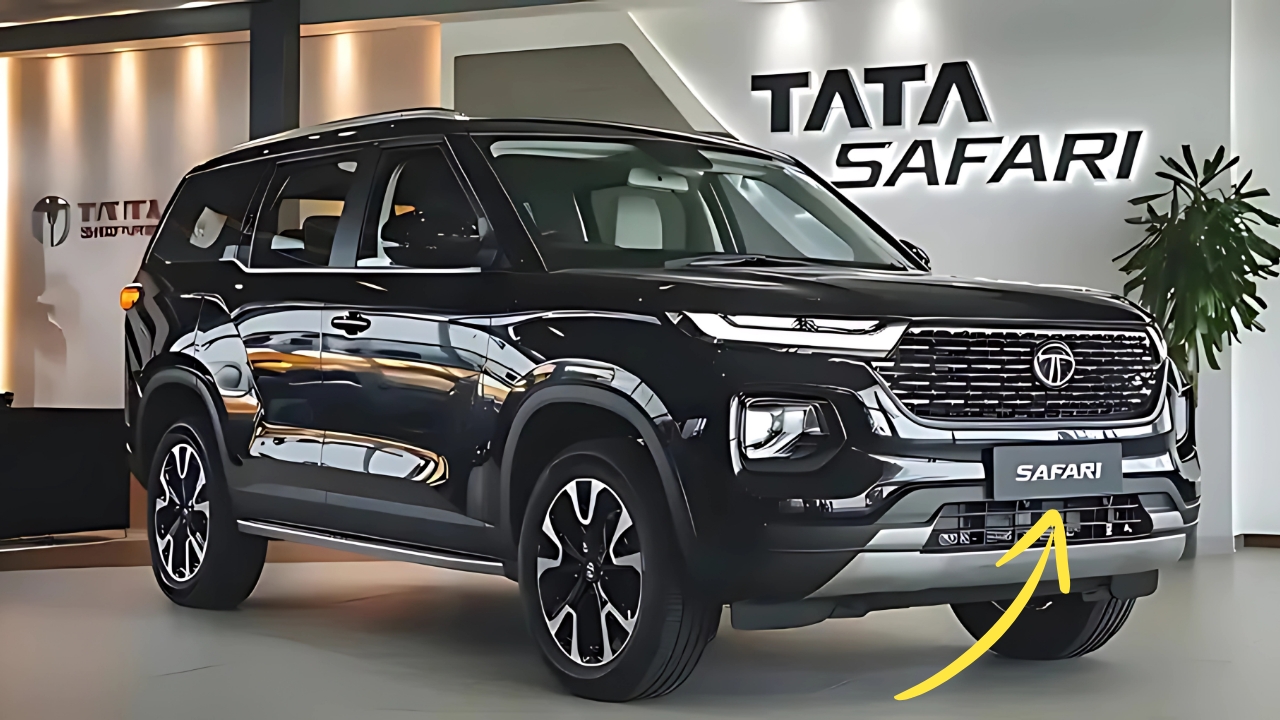Tata Safari: The automotive landscape in India has witnessed numerous vehicles come and go, but few have established the enduring legacy and emotional connection that the Tata Safari has cultivated over its multi-decade journey.
As Tata Motors’ flagship SUV offering, the Safari represents not just a vehicle but a symbol of Indian automotive engineering prowess and the nation’s growing appetite for capable, premium mobility solutions.
Tata Safari: Evolution of an Icon
The Safari’s journey began in 1998 when Tata Motors introduced India to its first homegrown SUV. That pioneering vehicle, with its commanding road presence and go-anywhere capability, quickly captured the imagination of Indian consumers seeking adventure and status.
Through successive generations, the Safari has undergone transformative evolution while maintaining its core identity as a capable, family-oriented SUV.
The latest iteration represents the most dramatic reinvention in the nameplate’s history.
Moving away from the traditional body-on-frame construction of its predecessors, the contemporary Safari adopts the advanced OMEGA (Optimal Modular Efficient Global Advanced) architecture derived from Land Rover’s D8 platform, signifying Tata’s global engineering ambitions and capabilities.
Design Language and Exterior Presence
The current Safari’s design philosophy embodies Tata’s “Impact 2.0” design language with distinctive elements that honor its heritage while embracing modernity.
The front fascia features a bold tri-arrow grille pattern flanked by slim LED daytime running lights positioned above the main headlamp clusters, creating a split-headlamp appearance that’s become characteristic of Tata’s newer vehicles.
In profile, the Safari presents a dynamic silhouette with a floating roof effect achieved through blacked-out pillars, complemented by distinctive chrome finishers that run from the A-pillar to the tailgate in an unmistakable safari-inspired accent.
The stepped roof design—a nod to previous generations—provides additional headroom for third-row passengers while serving as a signature styling element.
The rear design continues the premium theme with wraparound LED taillamps connected by a high-gloss black panel bearing the Safari nameplate.
Dual exhaust finishers and a sculpted bumper with skid plate elements complete the sophisticated yet robust appearance.
Interior Comfort and Versatility
Stepping inside reveals an interior that balances luxury with practicality. The dashboard architecture features layered elements with contrasting materials including wood, chrome accents, and premium soft-touch surfaces.
The commanding seating position provides excellent visibility, reinforcing the vehicle’s SUV credentials.
Available in both six and seven-seat configurations, the Safari caters to different family needs. The six-seat variant features comfortable captain’s chairs in the second row with a convenient center walkthrough to access the third row.
The seven-seat configuration offers a bench seat with a one-touch tumble mechanism for third-row access.
The third row itself deserves mention for being more accommodating than many competitors, with thoughtful features like dedicated air conditioning vents, charging ports, and adjustable headrests enhancing comfort for all passengers regardless of seating position.
Cargo versatility remains impressive with modular seating arrangements allowing for various combinations of passenger and luggage space.
With all three rows in place, the Safari offers adequate space for weekend luggage, while folding the third row significantly expands cargo capacity for longer journeys.
Technological Integration
The Safari embraces modern connectivity with a floating 8.8-inch touchscreen infotainment system supporting wireless Apple CarPlay and Android Auto integration.
The system pairs with a premium nine-speaker JBL audio setup on higher trims, delivering immersive sound quality throughout the cabin.
The driver interfaces with a semi-digital instrument cluster featuring a 7-inch TFT display that provides customizable information including navigation prompts, driving data, and vehicle status.
The iRA (Intelligent Real-time Assist) connected car technology enables remote vehicle monitoring, geofencing capabilities, and over-the-air updates that keep the vehicle’s systems current.
Convenience features abound, including a panoramic sunroof that extends over the first and second rows, creating an airy atmosphere, ambient lighting with multiple color options, and a gesture-controlled powered tailgate that facilitates loading when hands are full.
Performance and Driving Dynamics
Under the hood, the Safari employs Tata’s 2.0-liter Kryotec turbocharged diesel engine producing 170 horsepower and 350 Nm of torque.
This powertrain can be paired with either a 6-speed manual transmission or a 6-speed torque converter automatic, the latter offering smooth shifts well-suited to the vehicle’s premium positioning.
The monocoque construction delivers car-like handling characteristics while maintaining SUV capability.
The fully independent suspension—double wishbone front and multi-link rear—provides a composed ride quality that absorbs road imperfections effectively while maintaining stability during cornering and high-speed cruising.
The Safari offers multiple driving modes—Eco, City, and Sport—that adjust engine mapping and transmission behavior to suit different driving conditions and preferences.
Additionally, the terrain response modes (Normal, Rough, and Wet) modify traction control parameters to enhance capability across various surfaces despite the front-wheel-drive architecture.
Safety Credentials
Safety receives appropriate emphasis with a comprehensive suite of features including six airbags, electronic stability program, hill hold and hill descent control, corner stability control, and a tire pressure monitoring system.
The advanced driver assistance features include perimeter monitoring, automatic emergency braking, and parking assistance systems on higher trims.
The underlying structure employs high-strength steel strategically positioned to create a robust safety cage, while crumple zones manage impact forces effectively.
These engineering considerations have contributed to the Safari’s impressive safety ratings in domestic crash tests.
Market Positioning and Heritage
The Safari occupies a unique position in the Indian automotive market as a premium three-row SUV with strong domestic roots.
While competing with international brands, it leverages its Indian heritage as a strength, understanding local conditions and preferences intimately.
The nameplate carries significant emotional equity among Indian consumers, many of whom associate it with family adventures and milestone journeys.
Tata Motors has successfully capitalized on this connection while elevating the product to meet contemporary expectations for refinement, technology, and safety.
Tata Safari:
The Tata Safari stands as testimony to the evolution of Indian automotive engineering and consumer preferences.
From its origins as a utilitarian SUV to its current incarnation as a sophisticated family vehicle with premium aspirations, the Safari’s journey parallels India’s own growth story.
As Tata Motors continues to refine and enhance this flagship offering, the Safari remains poised to carry forward its legacy while adapting to changing mobility trends.
For families seeking a vehicle that combines presence, practicality, and patriotic pride, the Safari continues to present a compelling proposition that honors its storied past while embracing the future.

